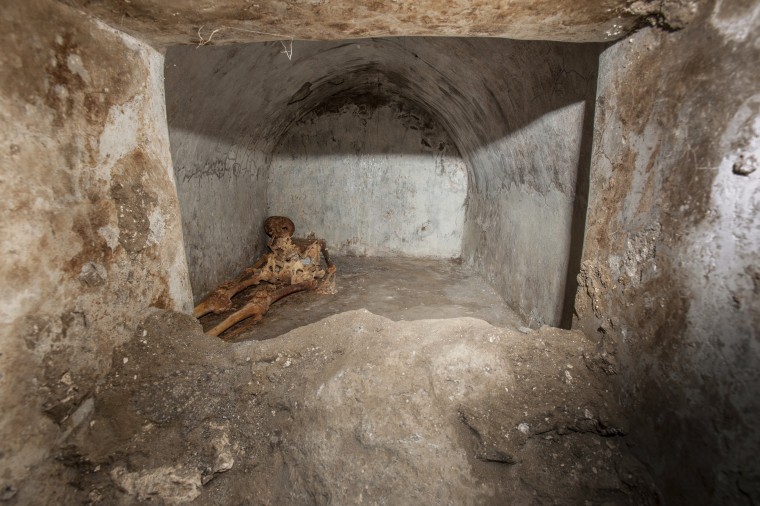Archaeologists have uncovered a well-preserved skeleton at a burial site in Pompeii which has shed new light on funeral rites and cultural activity in the doomed, ancient Roman city, officials said on Tuesday.
The body of a man, believed to be in his 60s, was found in a tomb which dated back to the final decades of Pompeii, before it was destroyed by the Vesuvius volcano in 79 AD.

A commemorative inscription in the tomb named the man as Marcus Venerius Secundio and made references to him delivering theater performances at Pompeii in Greek.
It was the first time that archaeologists have found definitive evidence of Greek — the lingua franca of the eastern Mediterranean at the time — being used in performances in the city alongside Latin.
"That performances in Greek were organized is evidence of the lively and open cultural climate which characterized ancient Pompeii," said Gabriel Zuchtriegel, director of Pompeii's Archaeological Park, explaining the multi-ethnic landscape of the city at the time.
Adults were normally cremated in Pompeii at the time, so the burial of Marcus Venerius is seen as highly unusual.
Archaeologists are investigating whether the man might have been embalmed ahead of burial. Certain textiles are known to have been used in embalming and fragments of what might be fabric have been found at the site.
Download the NBC News app for breaking news and politics
The park said in a statement that it was one of the best preserved skeletons ever found at the site and showed signs of partial mummification, with hair and an ear still evident on the skull.
Marcus Venerius's name appears in another city archive, which identified him as a public slave and a custodian of the Temple of Venus.
According to the inscription, after being freed, he joined the college of priests dedicated to the Imperial Cult — a group that saw members of the Roman emperor and his family as gods. His imposing tomb suggests he had reached a certain social and economic status before his death.
The burial site is not currently accessible to visitors and lies beyond the city limits. Pompeii officials said they were looking into how they could open the area to the public.
Pompeii, 14 miles southeast of Naples, was home to about 13,000 people when the volcanic eruption buried it under ash, pumice pebbles and dust, freezing it in time.
The site was not discovered until the 16th century and organized excavations began around 1750. A recent burst of archaeological activity, aimed at halting years of decay and neglect, has enabled scholars to uncover areas that have previously remained buried under the volcanic debris.